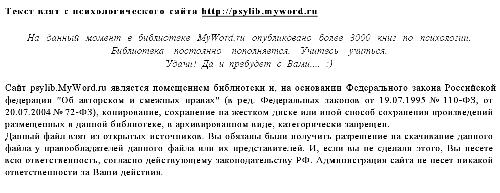- 2 402 202 книги
libcats.org









Computer Architecture: A Quantitative Approach
John L. Hennessy, David A. PattersonNot for the newbie, this book is written for individuals who are far beyond the primer stage in designing modern computer systems. A signpost in computer architecture (CA) pointing from the past to the future, this well-organized book brims with computer design information and both cutting-edge and historical material, covering everything from fundamentals to pipelining and even featuring the block diagram of Sony PlayStation 2 with regard to embedded systems.Though the book is designed with the classroom in mind (the authors are, after all, university professors), there are also many hands-on exercises at the end of each chapter. One feature found in most chapters, "Crosscutting Issues," is used to tie in ideas from the chapter with other cutting-edge ideas presented throughout the book. "Putting It All Together" is a section that shows how the ideas actually work. "Fallacies and Pitfalls" contains good examples of how you might err. But even if your student days are over, Computer Architecture: A Quantitative Approach works well as a reference and refresher on current CA design technologies, as well as innovative ideas on how to use its functional requirements and features.That said, how you read this book depends on your computing philosophy, i.e., whether you believe that the processor is the key to computer design or that the processor is secondary. The authors recognize this, spelling out different approaches to the material in the Preface, in the section titled "Navigating the Text. The addition of a glossary at the end of each chapter would have made this book the ultimate reference guide to CA design, but as it stands, Computer Architecture is still a must-have for anyone in the field.
Популярные книги за неделю:
#1

Самодельные детали для сельского радиоприемника
Авторы: З.Б.Гинзбург, Ф.И.Тарасов.Категория: радиоэлектроника
1.40 Mb
#5

Тестирование Дот Ком, или Пособие по жестокому обращению с багами в интернет-стартапах
Роман Савин
5.26 Mb
#7

Система упражнений по развитию способностей человека (Практическое пособие)
Петров Аркадий НаумовичКатегория: Путь к себе
818 Kb
#8

НЛП. Люди, которые играют роли
Бакиров АнварКатегория: Нейро-лингвистическое программирование (НЛП)
1.09 Mb
Только что пользователи скачали эти книги:
#2

Старинные Чешские Сказания
Ирасек АлоисКатегория: Мифы. Легенды. Эпос, Детская литература
1.65 Mb
#4

КП или МКП. Некоммутативная математика лагранжевых интегрируемых систем
Купершмидт Б.А.Категория: Математика, Математическая Физика
3.04 Mb
#7

Биохимия мембран. Учебное пособие для биологических и медицинских специальностей вузов
Под редакцией А.А.БолдыреваКатегория: биология
2.59 Mb
#8

Самодельные детали для сельского радиоприемника
Авторы: З.Б.Гинзбург, Ф.И.Тарасов.Категория: радиоэлектроника
1.40 Mb
#10

Histology and Cell Biology (National Medical Series for Independent Study)
Kurt E. JohnsonКатегория: Образование
33.54 Mb








